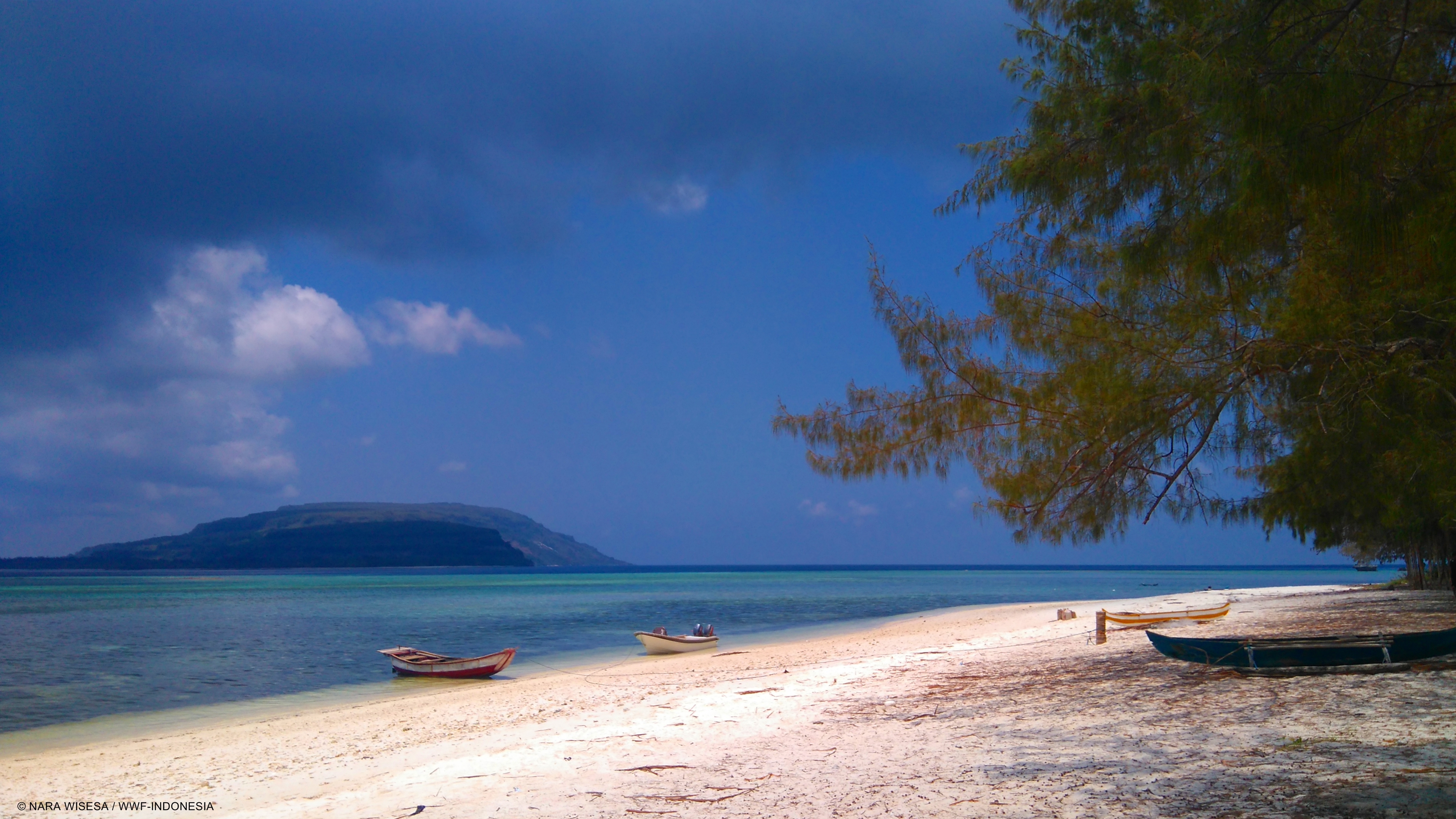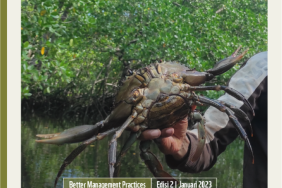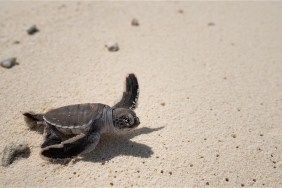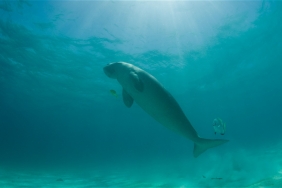#XPDCMBD: AN OVERVIEW OF THE UTILIZATION AND MANAGEMENT OF LUANG ISLAND'S NATURAL RESOURCES
Author: Estradivari (WWF-Indonesia)
Pulau Luang was a special research site for this expedition as it is the center of capture fisheries and mariculture in Southwest Maluku, where 100% of the island's population are fishermen. The Land Team spent two days on Luang Island and one day on Meatimarang Atoll - which is also part of Luang Island - to collect data and information.
Based on the data collected by the team, both via underwater surveys and interviews, it was discovered that this area has high potential for marine resources. The unique topography of the area makes it home to abundant and diverse marine species. Not only that, the area is also suitable for the development of seaweed cultivation.
Seaweed farming was first introduced in late 2008 and is now widespread throughout the community, involving everyone from the young to the old. Each family can produce nearly two tons of dried seaweed every 45-60 days throughout the year. This farming activity has become the main economic support for the family. In addition to seaweed farming, between September and November each year, fishermen go to the area around the reef to fish for grouper and snapper, which are then sold alive to live reef fish exporters. At other times, fishermen fish within the 'methi' area - which is in the lagoon behind the reef cluster - to fulfill their daily food needs. In addition, they also produce salt for the communities around Pulau Luang and neighboring islands in Southwest Maluku.
Local people are aware that they depend heavily on natural resources, but they recognize that the coral reef area has been degraded in recent years. Most of them blame fishermen from outside Southwest Maluku for "stealing" fish resources in the Pulau Luang area and using destructive fishing gear, such as bombs. However, I think the reason is not only fishermen from outside. However, the heavy use of marine resources, both on Pulau Luang and the surrounding islands, contributes to the pressure on coral reef degradation. The Sea Team confirmed that most reefs less than ten meters deep had been significantly degraded and were dominated by dead coral and broken coral. But in deeper waters, the team was still able to find corals in good condition.
Sasi, one of the existing local wisdom for the utilization of certain types of marine resources, is still carried out until now. The sasi system is no longer regulated under customary law, but under church law. This is enough to show that the community is aware and open to conservation efforts. Therefore, proper capture fisheries practices and area management plans are essential for the regulation and protection of marine resource utilization in Southwest Maluku before it is too late.





